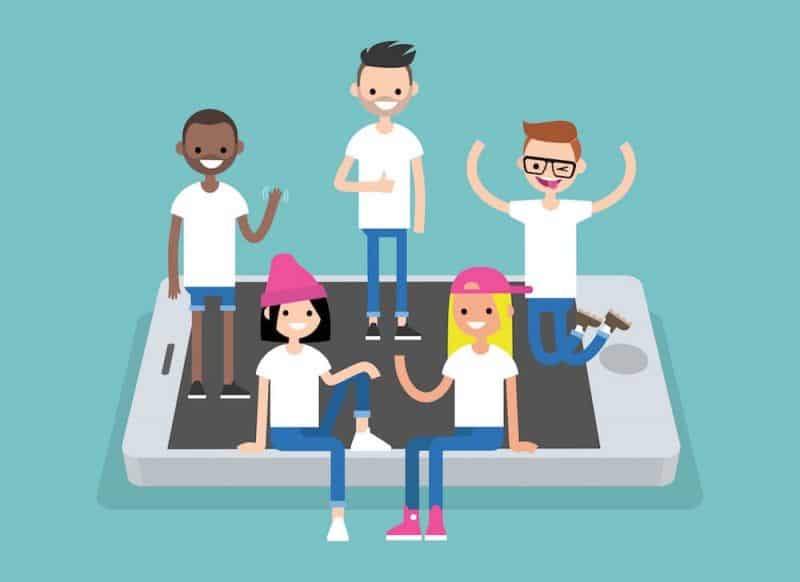For more information, check out our ebook here.
Millennials are used to having access to top-level multimedia, so low-level training and eLearning simply won’t fly. However, just adopting a millennial approach to training might not benefit all generations in the workplace.
Once upon a time, low-level content was the norm for corporate training. It was no big deal to force everyone to attend the same boring training, watch the same lackluster video, or worse, page through the same handbook. It was a fact of life more or less expected by Gen X-ers who learned that training was something to be endured before getting back to business as usual.
Then, enter the millennials: love ‘em or hate ‘em, you have to admit that they’ve changed the game, especially when it comes to training. Millennials are used to having access to top-level multimedia, so low-level training and eLearning simply won’t fly. However, just adopting a millennial approach to training might not benefit all generations in the workplace.
There is so much focus on how to reach and connect with the Millennial generation right now, that many organizations are unintentionally alienating other generations in their learning and development focus. So how do learning leaders speak to a multigenerational workforce, and capture and hold the attention of all of them?
If you want to create training that speaks to everyone (including millennials), you’re going to want to follow the three C’s.
Contextualize
It doesn’t matter how fancy the delivery method; if your content is bad, the overall training experience becomes sour. You can’t simply stuff the same irrelevant content into a fancy new LMS and hope that learners get something out of it because millennial learners can sense the disconnect and irrelevancy from a mile away.
Remember that this is a generation that learned at the altar of Netflix and YouTube. They’re used to taking charge and using technology in a very personal way. Whether it’s binge-watching TV shows or going through a training module, they want to choose their own learning path and have the LMS make intelligent suggestions along the way. They don’t want to be forced through the same training as a colleague in marketing when they’re aiming for a career path in HR.
Millennial learners aren’t just going to pick up an employee handbook because you said so. They want to know why they’re learning and how it’s going to benefit them and their career. All employees—regardless of age or generation—become more engaged when it’s clear that training isn’t just for the benefit of the organization, but because the organization is invested in improvement for the individual. Better trained employees are more satisfied employees, especially when that training leads to new opportunities.
Conversational
In the past, corporate training had a specific tone that was often used—for better or worse. It was supposed to read as authoritative but often came off as patronizing instead. That buttoned-up, talk down tone might have worked for long-suffering Gen X-ers, but for millennials, it’s disengaging and condescending. Instead, a younger generation demands to be treated as equals regardless of their position, which means a more conversational tone.
Of course, don’t mistake a conversational tone for one that is overly simplified or cheesy. Training should be done in a team-friendly voice that reminds employees that everyone–from the C-suite to the mail room–is in this together. Gen X-ers will appreciate the professional tone even as millennials connect with the respect they’re given.
Connect
The most effective learning experiences connect new learning to the learner’s previous knowledge. Your learners’ brains are already filled with information that is gleaned from lessons, experience, and memories. Any type of learning must respect that existing network of knowledge in order to be truly engaging. If lessons are redundant or patronizing, they’ll be disregarded–even if they’re quick and pithy. To keep learning relevant to every generation, self-paced learning makes a lot of sense to ensure this goal, where the ability to test a learner’s current knowledge determines where the learner starts within the learning path.
While they may get a bad rap in the media, I believe we should thank millennials. They’ve demanded that it’s time to ditch the legacy eLearning for something truly effective for every age. The days of boring training are numbered, as a new level of engagement and quality is demanded by today’s workforce in every generation.






